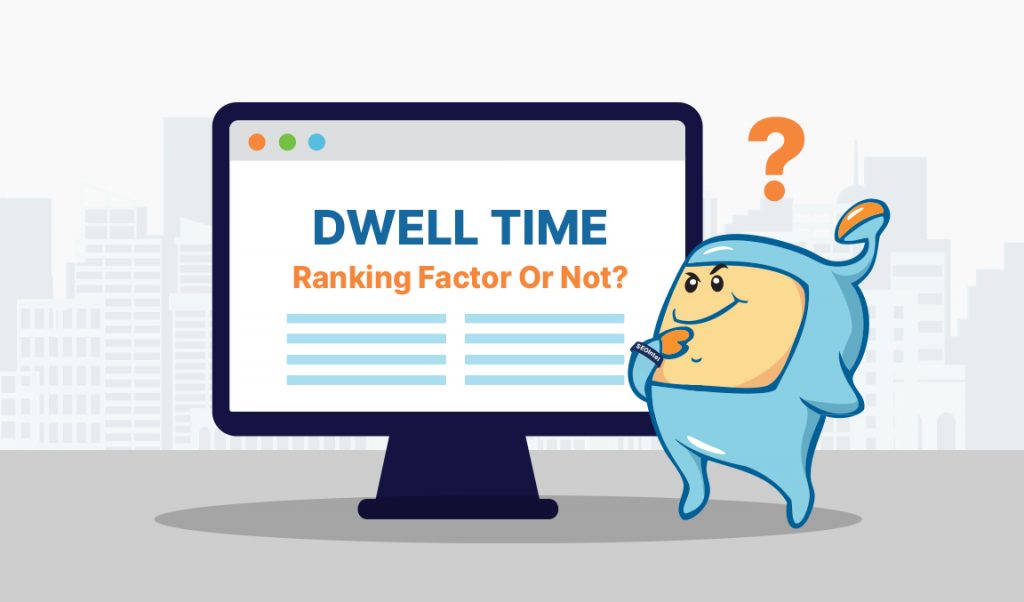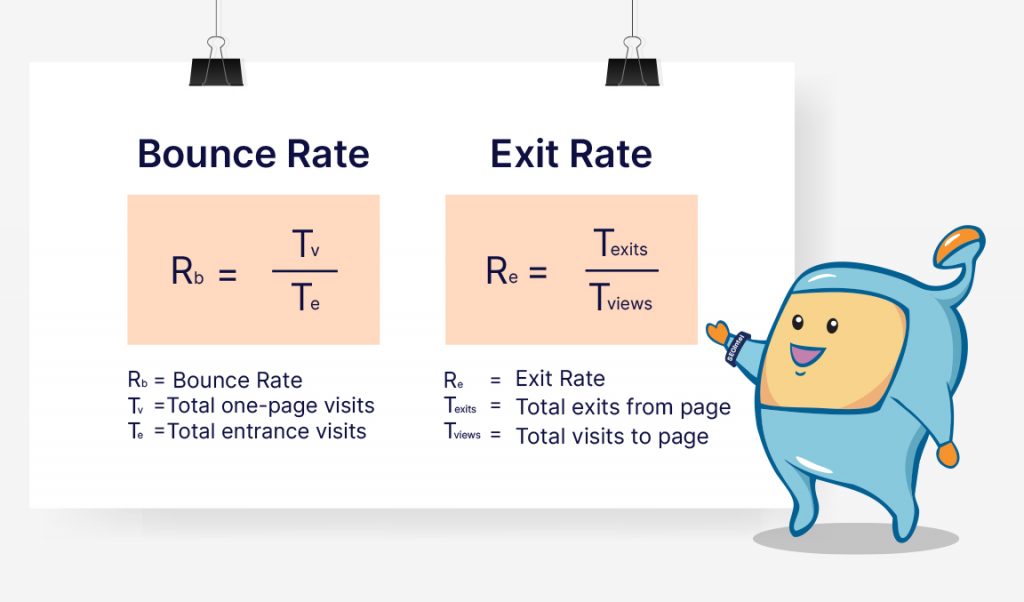
When creating content for your website, it is important to consider the search intent of the users. Considering the search intent of the users, creating relevant content that is comprehensive and gives value to users help users stay on your page and on your site longer. This increases your dwell time, and can affect the rank of your site.
Dwell time is a critical site metric that is frequently misunderstood by many. In this article, we will talk about what dwell time is, why it is important to take in consideration for your SEO, and ways to increase your site’s average dwell time.

Users visit Google and other search engine, type a search query, and afterwards, results will be loaded from several listed websites. The user then clicks on one of the listings from the search results, hoping to find the answer that they are looking for.
Some may find the answer that they are looking for and stays on the page, while some may not be happy with what they see and end up going back to the search results to find another content that satisfies their search intent.
Dwell time is the amount of time between when a user clicks on a search result and when they return to the search engine results pages (SERPs). It’s a measure of how long they spend on a page, starting and ending with the SERPs. This last point distinguishes dwell time from “time on page” and “bounce rate”.
In theory, the longer the dwell time, the better, because it indicates that the visitor has consumed the majority (if not all) of the content on a page before returning to the SERPs or taking another action on the site.

For years, it has been debated in the SEO community whether or not search engines use dwell time as a ranking signal. Although Google is notoriously secretive about any specific metric that appears in its algorithms, the introduction and subsequent removal of a specific feature in Google suggests that dwell time is a ranking factor. The option to block all results from specific domains was that feature.
According to the general consensus, Google decided whether or not to provide the option to block a domain from SERPs based on dwell time. The precise threshold is still unknown, but it stands to reason that a shorter dwell time would result in a visitor being presented with the block option, as this resulted in a significantly better user experience – Google’s ultimate goal (besides making boatloads of cash, of course).
The “More by” feature in the SERPs was another sign that Google was paying attention to dwell time as a ranking signal.
This function was inextricably linked to authorship. Verified content creators who published articles with long dwell times were rewarded in the SERPs with higher placements and “More by” links beneath the primary search result. Although authorship remains an important social signal, Google has retired both “More by” and domain blocking – a real shame, given how useful these features were.

When discussing dwell time definition, it is critical to distinguish between “time on page” and “bounce rate.” Here’s a quick information below:
To accurately determine Time on Page, analytics platforms such as Google Analytics require two clicks: an entrance click and an exit click. However, without that crucial second click, even a session in which a visitor arrives at a page, stays for 25 minutes, and then leaves is considered a bounce, despite the fact that it clearly isn’t. This is the underlying principle of bounce rate and actual bounce rate.
A visit lasting six seconds is obviously a bounce. The visitor arrived, quickly determined that the page or content was not what they were looking for, and exited. A visit in which the user arrives and spends nearly half an hour reading an engaging piece of long-form content before leaving, on the other hand, is not an actual bounce. This is why some pages with high rankings and excellent content appear to have high bounce rates. They have high standard bounce rates rather than high actual bounce rates.
Now, if the time on page is low, it could indicate that the user received the answer they required quickly and, as a result, left the website quickly. The same is true for the bounce rate: the user may have gotten the information they needed and closed the window after a quick scan.
However, dwell time is more telling. If the user looked at a webpage briefly before returning to the SERPs, this indicates that the webpage they viewed did not provide them with the information they required. In short, the user was dissatisfied with the results.
So, how long should you stay?
Two to four minutes should be your goal. A dwell time of less than two minutes is usually considered inadequate (although the precise numbers are always shifting, as is the case with many SEO metrics).
This is why dwell time is a more reliable indicator of a page’s quality and relevance than bounce rate, which some marketers believe is overly simplistic. But what do search engines make of dwell time?
In Test 134 of SEOIntel, it was tested whether Dwell Time was a ranking factor. On the test, the test site dropped to the bottom. However, this was called as a non-factor due to the premise that the drop in rank may be that Google was able to determine that the traffic in the test was being manipulate. For more details, check out SEOIntel Test 134.
In addition to Test 134 on Dwell Time, bounce rate and time on site were also tested. For more details on the results of the tests, check out seointel.com

Now that we’ve established what dwell time is and why it’s probably a ranking signal, how do you increase dwell time on your site?
In all honesty, whether you’re trying to increase your dwell time or not, you should be doing these practices, anyway. There is no silver bullet for increasing dwell time, but using these techniques may help your content become more “sticky”. Here are some suggestions:
The first tip for increasing dwell time is to create better content. After all, no one is going to read nonsense content, right?
Good content, whether it’s blog posts, infographics, or videos, should be: useful (actionable or educational), amusing (funny, unusual/out-of-the-ordinary, surprising) and easily accessible (skimmable, conversational, well-designed).
It appears logical: if you add more content to the page, people will have to spend more time reading it. As a result, SEO dwell time increases. While it may appear obvious, the value of long-form content has only recently become widely recognized. A piece of content is usually considered long-form if it contains at least 2,000 words.
Of course, it is not only the quantity that is important. Quality is also essential. If your user reads one or two paragraphs of poor quality content, they will quickly leave. This may eventually harm your search engine ranking, and we don’t want that to happen.
Aside from using headings and subheadings to break up your content, there are a few other things you can do to make a page more accessible:
Because dwell time is calculated as the time between arriving at a page and returning to the SERPs, it makes sense to provide users with additional actions to take once they’ve finished reading your content, essentially preempting a potential second query or answering another question. This improves the visitor’s user experience, which is why internal linking is so important.
Internal linking is, of course, critical to optimizing SEO. Your site may suffer in rankings if it lacks a strong and logical internal linking strategy, as search engine spiders may not be able to thoroughly index the entirety of your site.
Internal links to other articles and pages, like content recommendations, can persuade your visitors to stay on your site for a longer period of time.
By recommending relevant articles to your readers, you give them a strong incentive to stay on your site. When used correctly, this tactic can be extremely effective, and the closer the recommended articles are to the piece of content the reader is viewing, the more likely they are to stay on your site by clicking through. After all, why would a visitor return to the SERPs if they could learn more about another topic of interest to them?
Indicators of engagement is when you allow comments on your content, user engagement opens up opportunities for discussion and even attest to your service or product. This places users in an active role, allowing them to interact with your platform and stay online. Comments sections are no longer just for trolls. This interaction might be a viral action that would help to promote your business or website even if you only have a 300-word blog post, because why not?
However, don’t just open the comments and walk away. Check in on a regular basis and respond to users to encourage further engagement. The Guardian is an example of a publication that values reader interaction. BuzzFeed is another platform with a thriving comments section. The platform has even created entire content pieces based on user comments.
Using videos or video content to supplement written content is an excellent way to keep a wide range of users engaged. While some people prefer to read text, others may prefer to watch video content. Furthermore, a video usually lasts at least a minute or two, which keeps visitors on the page if they watch the entire video.
Allrecipes is an excellent example of balancing video and text. All of the instructions in this example are written down, but you can also follow along with an on-page video. Many of the other criteria discussed above are also met by this page. It’s simple and easy to use, with a lively comments section and strategic internal linking.
Another method for increasing dwell time is to use a “pageless” scrolling design for your webpages.
Although infinitely scrolling pages can improve user experience, they can harm SEO if implemented incorrectly. This is due to the fact that search engine crawlers are dumb and cannot always replicate user behavior, such as clicking or scrolling.
Thank heavens, there is a simple solution that doesn’t require much effort. To aid search engine crawlers in thoroughly indexing the content of a scrolling page, the page must be paginated. Each section has a title> tag that has rel=”next” and rel=”prev” values declared in the head> tag.
We all know that users are impatient, if it takes time to get the answers in a single click, then thank you next, which we are avoiding to happen.
People will click away before they read the first word if your site takes forever to load. That is why you should ensure that your important web pages are PageSpeed optimized.
Speed also influences whether or not your visitors return. That’s why you should do everything you can to improve your site’s load time or speed.
For tips on how to increase page speed, check out our article on Page speed.
Whether or not dwell time is a ranking signal, increasing the amount of time visitors spend on your site and decreasing your bounce rate is definitely beneficial to your business. You can improve the stickiness of your pages or entire content, provide a more engaging experience for your visitors, and potentially increase conversion rate by implementing the best practices indicated above. Better learn this now, than too late. Great content means greater opportunity for dwell time, and getting high dwell time means more chances of conversion rates.